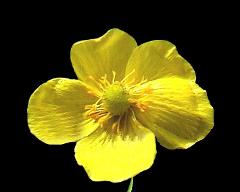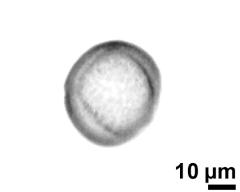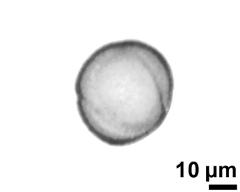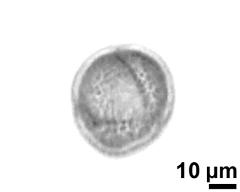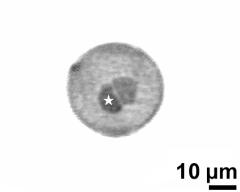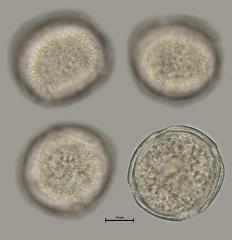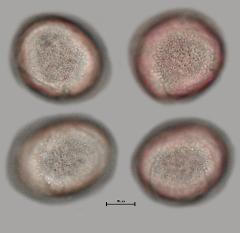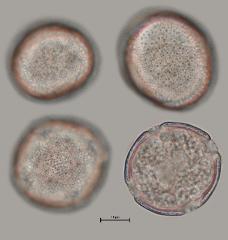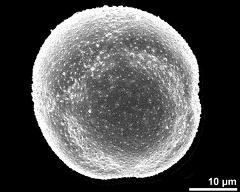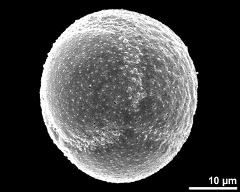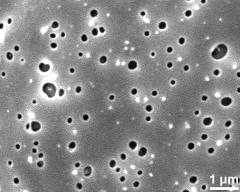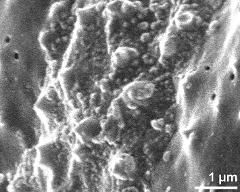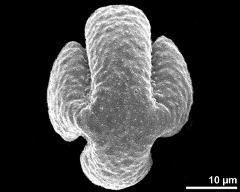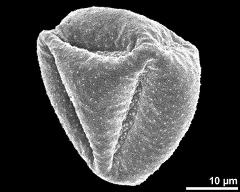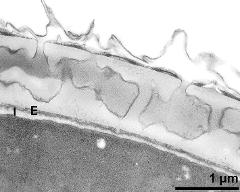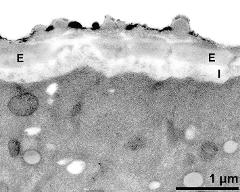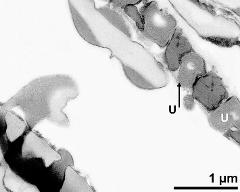Ranunculus lingua
Taxonomy: Angiospermae, Ranunculales, Ranunculaceae, Ranunculus
Published: 2021-06-29
Pollen Description
Shape, Size and Aperture
pollen unit: monad, dispersal unit and peculiarities: monad, size (pollen unit): medium-sized (26-50 µm), size of hydrated pollen (LM): 26-30 µm, 31-35 µm, shortest polar axis in equatorial view (LM): 26-30 µm, longest polar axis in equatorial view (LM): -, shortest diameter in equatorial or polar view (LM): 31-35 µm, longest diameter in equatorial or polar view (LM): 31-35 µm, pollen class: colpate, polarity: isopolar, P/E-ratio: -, shape: spheroidal, outline in polar view: circular, dominant orientation (LM): oblique, P/E-ratio (dry pollen): -, shape (dry pollen): irregular, outline in polar view (dry pollen): polygonal, infoldings (dry pollen): aperture(s) sunken, aperture number: 6, aperture type: colpus, aperture condition: colpate, pantocolpate, aperture peculiarities: aperture membrane ornamented
Ornamentation and Structure
LM ornamentation LM: scabrate, gemmate, verrucate, nexine: -, sexine: -, SEM ornamentation SEM: microechinate, perforate, suprasculpture SEM: -, TEM tectum: eutectate, infratectum: columellate, foot layer: continuous, endexine: compact-continuous, intine: monolayered, wall peculiarities: -, supratectal element: -
Miscellaneous
pollen coatings: pollenkitt, reserves in cytoplasm: starch, lipids, cell number: 2-celled, Ubisch bodies: present
Annotations: number of colpi varies from 6 to 12
Author(s) of diagnosis: Auer, Angelika; Auer, Waltraud
Pictures
Picture legend
- flower(s), photographer: Auer, A.
- polar view (proximal) - fresh, acetolyzed, unstained, photographer: Auer, A.
- optical section - fresh, acetolyzed, unstained, photographer: Auer, A.
- polar view (distal) - fresh, acetolyzed, unstained, photographer: Auer, A.
- generative cell (asterisk) and vegetative nucleus - fixed, formalin-acetic-alcohol, aceto-carmine, photographer: Auer, A.
- hydrated pollen - fresh, glycerine, unstained, photographer: Auer, W.
- hydrated pollen - fresh, glycerine, ruthenium red, photographer: Auer, W.
- hydrated pollen - fresh, glycerine, ruthenium red, photographer: Auer, W.
- polar view - fresh, rehydrated (water) & critical point dried & sputter coated with gold, photographer: Auer, A.
- equatorial view - fresh, rehydrated (water) & critical point dried & sputter coated with gold, photographer: Auer, A.
- exine surface - fresh, rehydrated (water) & critical point dried & sputter coated with gold, photographer: Auer, A.
- detail of colpus membrane - fresh, rehydrated (water) & critical point dried & sputter coated with gold, photographer: Auer, A.
- polar view (dry pollen grain) - dry, sputter coated with gold, photographer: Auer, A.
- dry pollen grain in equatorial view - dry, sputter coated with gold, photographer: Auer, A.
- interapertural area of pollen wall, intine (I), endexine (E) - fresh, glutaraldehyde & osmium & potassium ferrocyanide, Thiéry-test, photographer: Auer, A.
- apertural area of pollen wall, intine (I), endexine (E) - fresh, glutaraldehyde & osmium & potassium ferrocyanide, Thiéry-test, photographer: Auer, A.
- pollen wall (left) and tapetum cells with Ubisch bodies (U) - fresh, glutaraldehyde & osmium & potassium ferrocyanide, Thiéry-test, photographer: Auer, A.
Literature
- (1995) Spatial fragrance patterns within the flowers of Ranunculus acris (Ranunculaceae). Pl Syst Evol 195: 221-242
- (1985) Morfologia polinica de Ranunculus arvensis L. Anales Asoc Palin Lengua Esp 2: 19-23
- (1998) Pollenmorphologie der Ranunculanae. Diplomarbeit. Universität Wien : 125 pp
- (1971) Characterization and extraction of the polysaccharides of the intine of the generative cell wall in the pollen grains of some Ranunculaceae. Grana 11: 101-106
- (1994) Syncytes in the secretory anthers' tapetum of Ranunculus peltatus (Ranunculaceae). Polish Bot Stud 8: 23-30
- (1994) Exkursionsflora von Österreich : 1180
- (1998) Preparing living pollen material for scanning electron microscopy using 2,2-dimethoxypropane (DMP) and criticalpoint drying. Biotechnic Histochem 73: 137–143
Copyright and Citation
Cite this publication as:
Auer A., Auer W. 2021. Ranunculus lingua. In: PalDat - A palynological database. https://www.paldat.org/pub/Ranunculus_lingua/306355; accessed 2024-10-31

